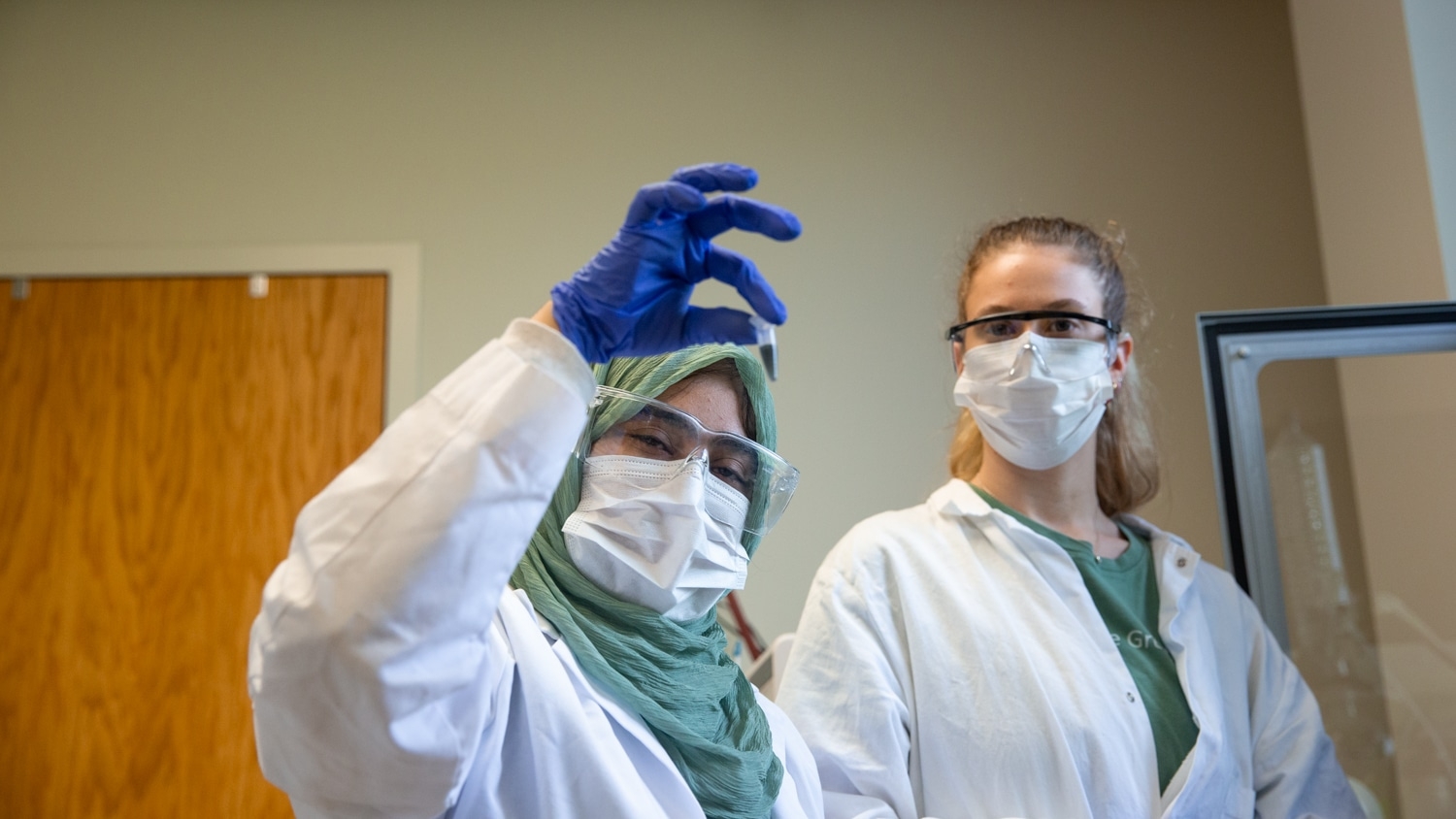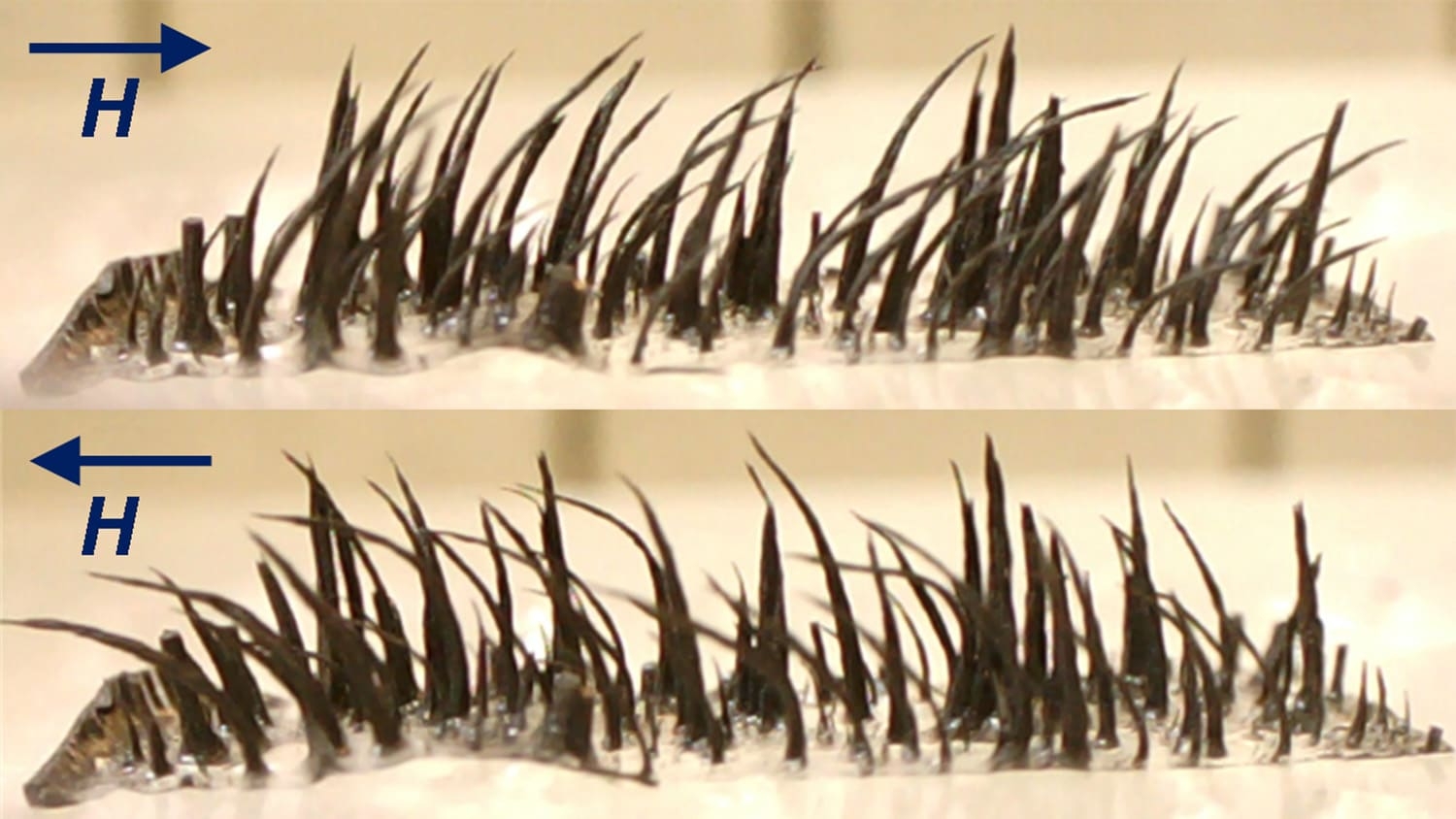By Sean Cudahy
Researchers at NC State University’s Wilson College of Textiles are touting breakthrough developments that could prove vital in detecting critical health changes, from chronic conditions like Cystic Fibrosis and diabetes to infections and cancer.
The research team, made up of students and faculty members in the Budhathoki Research Group, have made significant progress developing sensors and probes built from nanomaterials far smaller than anything the naked eye can see.
“This tiny tool can solve many big problems,” says Nigar Sultana, a Ph.D candidate in the fiber and polymer science program and one of several members of the research team.
Despite their physical size, though, these innovations could someday be at the heart of new medical technology aimed at simplifying the lives of doctors and patients.
Finding health answers through pH readings
Among the materials currently in development by the Budhathoki Research Group is a pH-reading sensor that could prove integral to future breakthrough biomedical technology.
Changes in pH — a measurement of acidity — can reveal a lot about a person’s health, from acid reflux to ulcers, eczema, acne and a myriad of other internal medical afflictions.
“There is a need for constant monitoring of pH changes,” says Sultana, who spearheaded this particular project.
It’s a need, though, that’s largely gone unmet.

“When it comes to biology, the number of probes or sensors that can actually detect pH changes in the native biological state is very few,” explains Assistant Professor Januka Budhathoki-Uprety, who leads the laboratory involved in this research.
But her team’s work may fill that gap.
As explained in the group’s October 2022 Royal Society of Chemistry journal article, the sensor Sultana and her colleagues developed is made from single-walled carbon nanotubes: rolled-up graphene sheets measuring 50,000 to 100,000 times thinner than a strand of human hair.
The materials are highly sensitive to their surroundings, making it an “ideal candidate,” Sultana says, to catch the subtle pH changes that might someday reveal, say, a metastasizing tumor or a progressing bacterial infection.
The team confirmed the effectiveness of its sensor by running tests using simulated sweat, since the pH of perspiration can signal a variety of medical conditions.
To complement those successful tests, Sultana’s work received further validation. Her poster presenting the research recently won second place at the Electrochemical Society nanocarbon division’s 2023 spring meeting in Boston.
And, yet, this innovation is just one of several sensors and probes the group is developing — each aimed at answering key health questions.
Fueling future health-tracking technology
Budhathoki-Uprety and her team sees their research as the backbone of potential health-tracking devices biomedical companies could look to develop in the near future. Such devices, in the group’s eyes, could reduce the need for more invasive testing procedures.
“If we have a molecular sensor that can precisely detect specific molecular events leading to health changes, that will have a huge impact in learning about disease biology and transforming healthcare,” Budhathoki-Uprety says.
“Unlike conventional larger devices, nanosensors, due to their size, offer several advantages. Companies won’t need to think about Tthe size issue for sensors may not pose limitations to be integrated into new technologies. They don’t need to think about the dimensional disadvantages,” Sultana says of the barriers this research has largely eliminated thanks to their use of nanomaterials.
On top of changes this research could inspire in the biomedical industry, the team’s work also serves as the latest demonstration of the innovation happening at the Wilson College of Textiles, including in the Budhathoki Research Group.
There, students and faculty study the interface between chemistry, biology and material science, focusing on everything from the development of nanosensors to smart biomedical textiles, and, indeed, nanotechnology.
Sultana feels she’s benefitted both from world-class facilities like the analytical laboratories available on campus, as well as faculty members that encourage students to pursue truly cutting-edge research.
As the team continues to develop and test its array of optical sensors and probes, the hope is to fuel innovation in disease detection and therapies, to be sure. But they also hope to incorporate their sensors into textile materials that might serve as the basis for future wearable technology, too.
For Budhathoki-Uprety, it’s proof of how this research into molecular biology ultimately comes full circle with the Wilson College of Textiles’ overarching vision: to be the global academic leader in chemistry, color science, and engineering of polymers, fibers, and textiles.
“We have resources here at NC State, to do groundbreaking research to address societal challenges,” Budhathoki-Uprety says.
This post was originally published in Wilson College of Textiles News.
- Categories:



